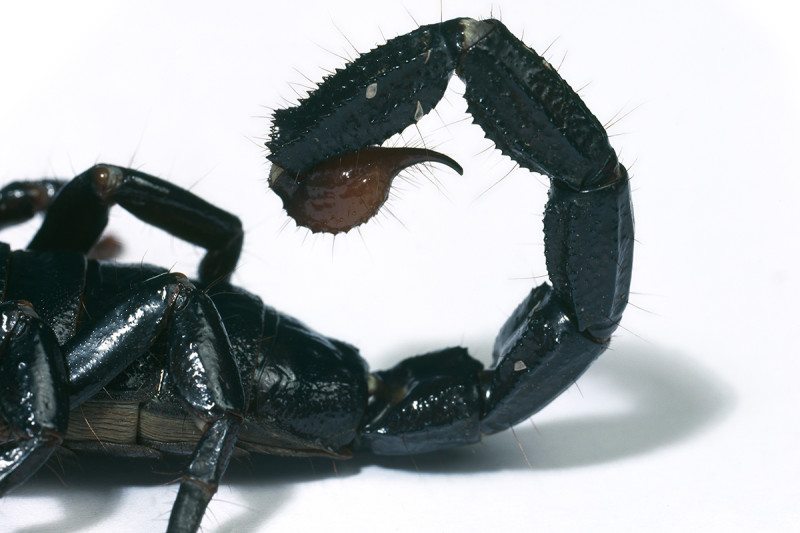
Venom: Killer and cure ran at London’s Natural History Museum to 13 May 2018…
Londoners! This holiday season, why not take the children along to the Natural History Museum? Its new exhibition Venom: Killer and cure brims over with fascinating and entertaining stories.
Have you heard about the emerald cockroach wasp (Ampulex compressa), which zombifies its cockroach prey with its sting before laying an egg on it that hatches into a larva that eats the cockroach alive while knowing, somehow, to leave its vital organs till last?
Too strong? Then how about the paralysis-inducing bites of the marine bloodworm (Glycera dibranchiata), whose copper-reinforced teeth are one of the toughest known structures in the natural world?
Oh, dear. There must be something child-friendly round here… How about the deer fly (Chrysops sp.)? The males feed exclusively on nectar! Unfortunately, the females feed exclusively on blood and have evolved an anticoagulant venom to keep their meals flowing.
Nods to some ingenious medicine aside, Venom seems hell-bent on convincing visitors that “nature” is a state of perpetual, terrible and gruesome conflict, and that – if your environmental competitors have their way – your whole lived experience is going to be filled with excruciating pain.
Those with strong enough stomachs will marvel at the ingenuity of nature’s torturers. Even the Iberian ribbed newt (Pleurodeles waltl), which hardly sounds the fiercest animal in the pantheon, has ribs which burst out through its poisonous skin to deter predators.
Those of a philosophic bent will appreciate the show’s underlying narrative, explaining how human cunning makes us the most efficient, though by no means the only, harvester of venom. There’s a sea swallow (Glaucus atlanticus) here, in the form of an extraordinarily delicate and beautiful glass model made by Leopold and Rudolf Blaschka. This pretty sea slug, about 2.5-centimetres long, eats Portuguese man-of-war (Physalia physalis) and collects their venom in its own tentacles, which it fires at predators to defend itself.
The fine-art crowd will thrill to artist Steve Ludwin’s 30-year project of no certain purpose: injecting himself with snake venom. Those of a literary bent, meanwhile, will savour the elegant phrasing of Justin Schmidt’s sting pain scale. Of the Western yellow jacket wasp (Vespula pensylvanica) he writes: “Hot and smoky, almost irreverent. Imagine W. C. Fields extinguishing a cigar on your tongue.”
Venom shows London’s Natural History Museum at its best: the exhibition is intimate, but not claustrophobic; unafraid of detail, but eminently accessible; visually arresting, but not exhausting.
I left trembling, angry and depressed. Had the show let me down? Quite the contrary: if anything, it had over-delivered.
How long, I wondered, must we put up with this ghastly horror-show world of ours? Why should we have to tolerate the way competing slow lorises (Nycticebus sp.) inflict festering wounds on each other, and male emperor scorpions (Pandinus imperator) feel the need to sting their females before they dare broach the subject of sex?
Venom has convinced me that nature is vile. It is pitiless and disgusting, and the sooner we pave over it the better.
